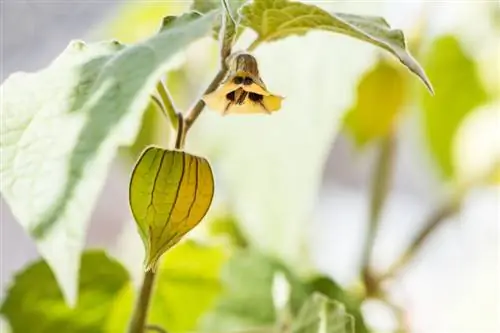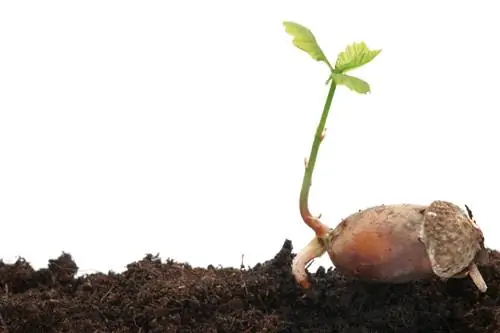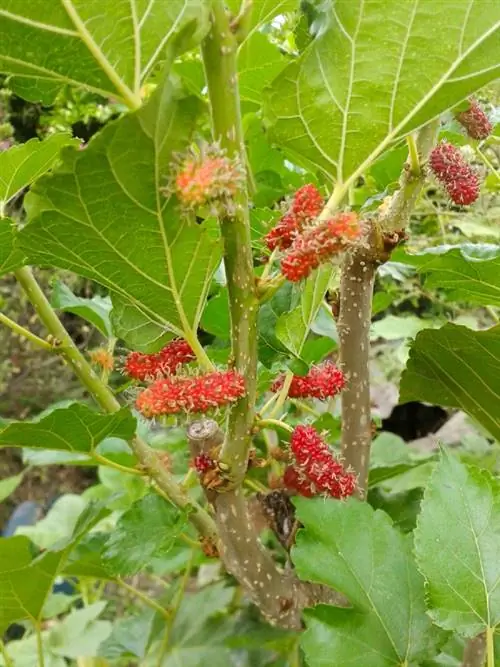- Author admin [email protected].
- Public 2023-12-16 16:46.
- Last modified 2025-01-23 11:20.
The cherry-sized, bright orange-red Physalis with the characteristic brown covering are available in the supermarket almost all year round. However, hardly anyone knows that the plant, also known as the Cape gooseberry or Andean berry, can be grown in the home garden and even on the balcony with little effort.

Does Physalis grow on a tree or bush?
Physalis does not grow on trees, but on herbaceous bushes about 1-1.5 meters high. They are closely related to tomatoes and can be grown similarly to tomatoes. The Physalis bushes are perennial and can be overwintered without any problems.
Physalis growing on the bush
The Physalis - the botanically correct name is Physalis peruviana - does not grow on trees, but on herbaceous bushes about one to one and a half meters high. These are richly and widely branched, have angular, often purple stems and have a strong tendency to overgrow. The bell-shaped flowers grow individually on the forks of the stems and in the leaf axils. After flowering, the outer sepals enlarge to form the typical egg-shaped (or lantern-like) shell. Physalis belongs to the nightshade family and is closely related to tomatoes. As a result, the plants can be grown wherever tomatoes can be grown.
Physalis annual or perennial?
Since the Andean berry germinates and develops fruit within one growing season, in this country it is treated as an annual plant, like the tomato. In fact, the plant is perennial and can be overwintered quite easily.
Fruits are real vitamin bombs
The fruits, which are very rich in vitamins, ripen around three to four months after sowing, which is why Physalis should be grown as early as possible. One plant can produce more than 300 berries, which, when harvested and left in their calyx casings, can be stored refrigerated for several weeks. The round berries are about one to two centimeters large and have a firm, smooth fruit skin. Inside there are numerous lenticular seeds. Ripe Andean berries can be recognized by their cups, which quickly dry to a straw-yellow color, and their strong color. The orange-yellow flesh is firm, juicy, sweet and sour and very aromatic. Unripe fruits are considered poisonous.
Ideas for using ripe fruits
- eat raw and fresh from the bush
- Dry physalis like raisins
- popular ingredient for fruit salads, puddings, ice creams and other sweet dishes
- cooking
- process into jam, jelly or chutney
- stewed with sugar and honey, the berries make a tasty dessert
Tips & Tricks
The species-rich genus “Physalis” includes several other clans, some of whose fruits can be used as fruit or vegetables. These also include the little-known species Physalis ixocarpa (tomatillo, Mexican ground cherry) or Physalis pruinosa (pineapple cherry).






